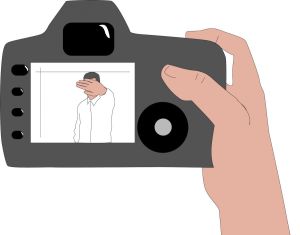After spotting an ad for a photography-based expedition to India available to high school students last year, I decided that I would very much like to begin fulfilling my desire for world travel. I respectfully encouraged parents to allow me to go, and after a few weeks of coaxing, they obliged.
As excited as I was about the cultural experience, my primary goal was to remain as focused as I possibly could on improving my photography skills. To achieve this, I discerned that I would have to push myself out of my comfort zone and try something totally foreign to me: photographing individual portraits.
What surprised me the most upon my arrival in India was the general nonchalance on the part of the public toward my advances. Of the many portraits I asked to take of locals, I was never denied by anything more than a few polite shakes of the head. Most of the time, in fact, people were overjoyed to have their picture taken. On the rare occasion that I forgot to or was simply too timid to ask, I was usually met with a wry smile and a direct stare into the camera, as if the subject of my shot knew the inherent unimportance of my photograph and was participating simply as a gentle courtesy. The most difficult part, really, was trying notto attract too much attention to myself as a typical American tourist.

But, as was bound to happen, I found I fit the role of a typical American tourist rather well. On one particular occasion, as our group was standing outside a restaurant in downtown Delhi, a crowd of locals slowly collected around us until, in an interesting turn of events, we had our own paparazzi. A few of us enjoyed the attention (myself included) and posed for any lens we could see. But as point-and-shoot cameras snapped away at the Americans in floppy sun hats and cheap sandals, most of the members of our group shied away from the crowd, covering their faces and muttering such things under their breath as, “Literally the one day I didn’t put on mascara.”
It was a subtle moment, one all too familiar to a Westerner living in the digital age: a camera—most often that of a cell phone—is turned on an unexpecting face and is met almost instantaneously with a sheepish insecurity.
And it was during this instant that I was reminded why I had been so hesitant toward portrait photography in the first place.
We have, as a Western culture, developed an obsession with extrinsic appearance, so much so that it has become somewhat of a cultural norm. This has resulted, expectedly, in our innately present photophobia. This sentiment could very well be the direct product of our oversharing tendencies (constant selfies, online personas). Put simply, the feeling is that if it’s not profile picture-worthy, it shouldn’t be taken.
The essential question remains: why isn’t this phenomenon as prevalent in a developing country like India? Could it be that people just don’t have time to be concerned with acceptable photographic appearance? It’s an interesting thought, but I can attest that wealthy, well-dressed individuals in New Delhi’s expensive shopping malls didn’t mind having their photos taken. Those of India’s upper-middle class have about as much time for vanity as the average American, yet they saw our photographic obsessions as an opportunity to connect with other people, not shy away from them.
Compare that to Anywhere, USA, where a photograph requested of any given stranger would surely be met with nervous laughter and a dismissive wave of the hand.
Ultimately, the photographic process is one that should not be ostracized, but rather embraced as a celebration of human individualism. The true beauty of India, at least for us photographers, came not from blemish-free faces and perfectly white smiles, but from rough, weathered skin and crooked teeth. Our photos were nothing more than snapshots of moments with other humans in a foreign land, and each respecting party, the photographer and the photographed, treated them as such.
The land, though, doesn’t have to be foreign. We, too, have the ability to embrace our best photographic selves, to look a camera dead in the lens and remain calm and natural no matter what we think the end photo will look like. We have the ability to let go of our photography vanity. The reality, as I think many of those I met in India realized, is that regardless of the result, the experience of interacting with another human being, of meeting someone new and immortalizing oneself in image, is worth all the bad photo days in the world.
That was how I treated my photography sessions. There were no hidden faces, no words of excuse. Just the snap of a shutter and a quiet smile, a moment of intimate connectivity captured forever.






